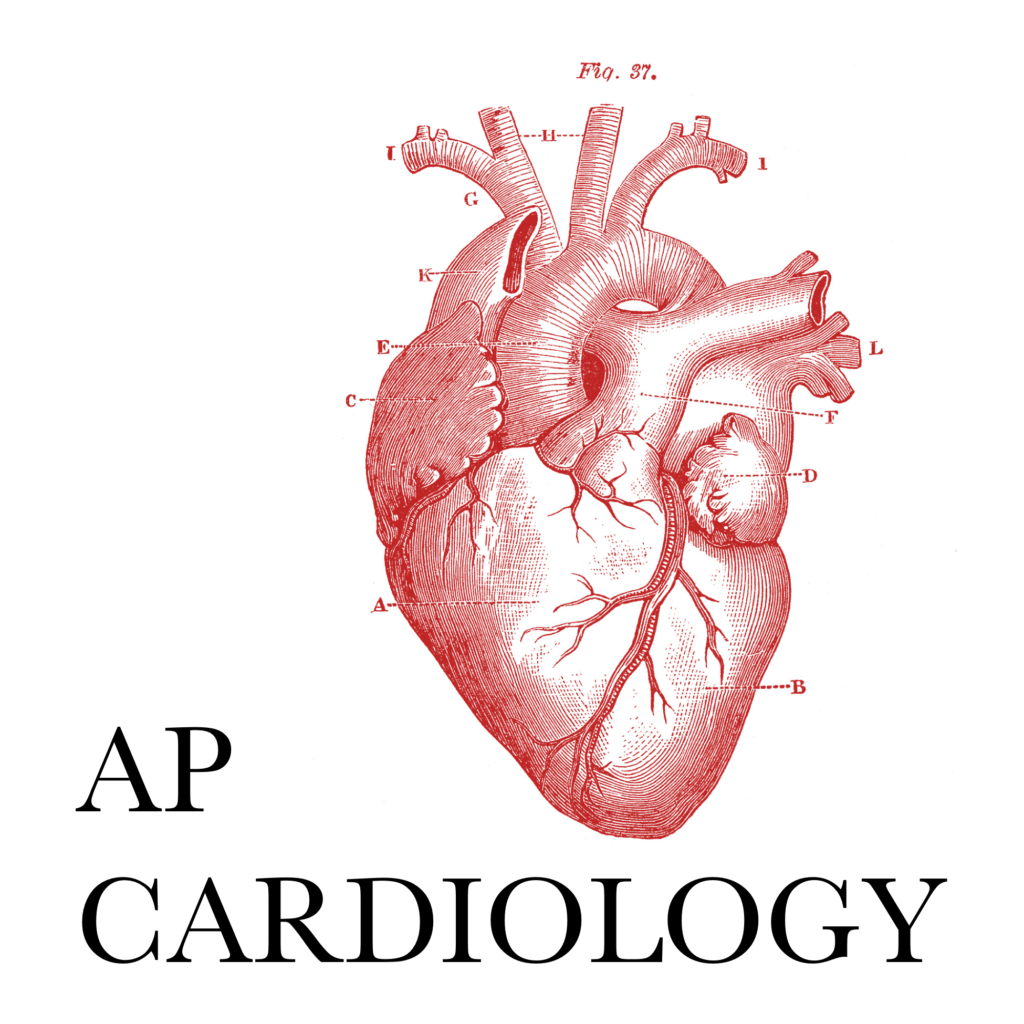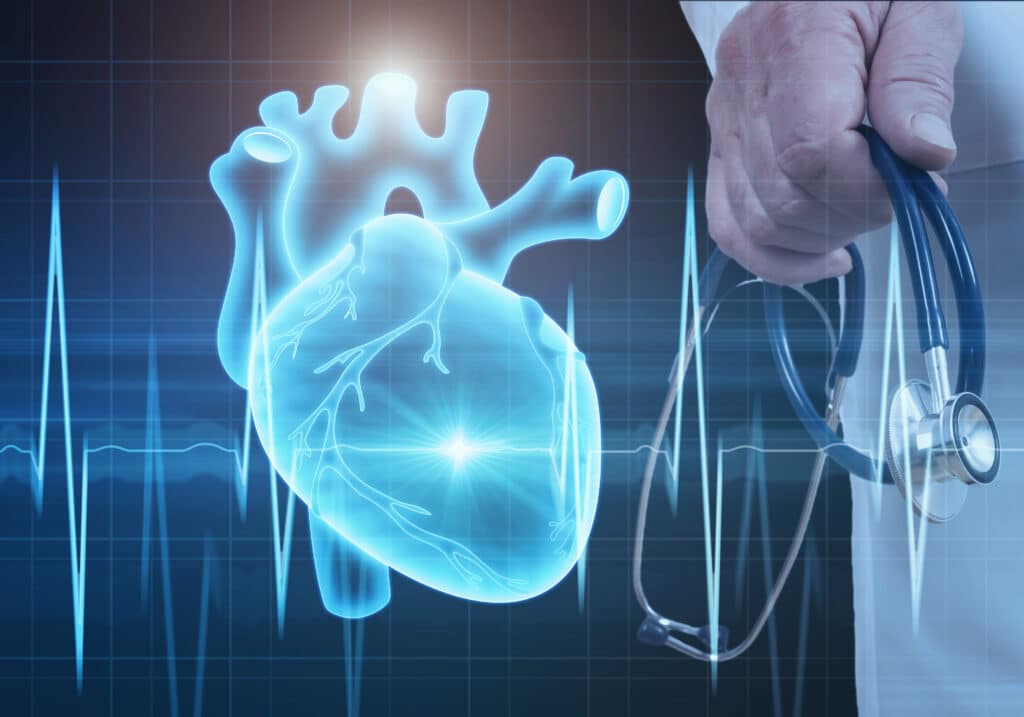Dr Garcia’s breakdown of healthy heart markers to watch
Wiki Article
Recognizing the Relevance of Cardiology in Modern Medical Care Services
Cardiology plays a vital function in contemporary health care, particularly as heart condition remains to be the leading source of death worldwide. Breakthroughs in diagnostics and therapy have actually transformed patient care, making it possible for earlier interventions and improved outcomes. In addition, the change towards preventative cardiology encourages people to handle their health and wellness proactively. As innovation proceeds to develop, the integration of ingenious services may even more redefine cardiology's influence on public wellness, motivating a more detailed examination of emerging fads and their implications.The Frequency of Heart Problem and Its Influence On Public Wellness
Heart illness stays the leading cause of death around the world, its impact extends far past individual clients to influence public wellness systems and economic climates. The high prevalence of heart problem puts a significant strain on health care resources, demanding increased financing for avoidance, recovery, and treatment programs. Public health and wellness initiatives must deal with threat factors such as obesity, smoking, and inactive way of lives, which add greatly to the increasing incidence of heart conditions.Moreover, the financial problem related to heart problem is enormous, incorporating not just straight clinical expenses but likewise indirect costs related to shed efficiency and premature mortality. Areas encounter challenges in managing these prices, commonly resulting in differences in healthcare accessibility and outcomes. As the population ages and lifestyle-related risks proceed to escalate, the necessity for efficient cardiology interventions ends up being paramount. Addressing heart condition is not only a matter of private wellness however additionally an essential public health top priority.Advancements in Cardiac Diagnostics and Imaging Techniques
Recent improvements in heart diagnostics and imaging methods have actually transformed the area of cardiology, boosting the capacity to identify and keep an eye on cardiovascular disease. Techniques such as cardiac MRI, CT angiography, and echocardiography have ended up being significantly sophisticated, providing comprehensive photos of cardiac frameworks and functions. These techniques permit the early recognition of problems like coronary artery illness, heart failing, and valvular disorders.Moreover, improvements in non-invasive diagnostics, such as wearable innovation and remote monitoring tools, have actually empowered people and health care providers. These devices facilitate real-time monitoring of heart rhythms and various other crucial indications, resulting in prompt interventions. In addition, expert system is being incorporated right into imaging analysis, improving precision and efficiency in diagnosis.Technologies in Treatment Alternatives for Heart Conditions
Current advancements in cardiology have actually brought about considerable advancements in treatment choices for heart conditions. These consist of innovative surgical methods that improve procedural results and arising medicines that use brand-new opportunities for treatment. As the area advances, these innovations play a crucial role in improving client treatment and end results.Advanced Surgical Techniques
Developments in surgical techniques have actually transformed the landscape of cardiology, supplying brand-new wish for patients with heart conditions. Minimally invasive treatments, such as catheter-based treatments, have significantly reduced healing times and healthcare facility keeps. Strategies like robotic-assisted surgical procedure enhance precision, allowing doctors to navigate complex physiological structures with better precision. Developments in imaging innovation assist in real-time visualization during treatments, improving results. Transcatheter aortic shutoff replacement (TAVR) exemplifies an innovation in treating aortic stenosis, allowing shutoff replacement without open-heart surgery. Furthermore, hybrid approaches that integrate catheter-based and medical techniques supply customized options for different heart concerns. These innovative medical techniques not only enhance client security but likewise broaden treatment alternatives, emphasizing the important function of innovation in modern cardiology practices.Arising Therapies and medicines
As the landscape of cardiology remains to advance, emerging treatments and medicines play a critical duty in boosting treatment alternatives for heart problems. Innovations such as novel anticoagulants and advanced lipid-lowering representatives have transformed the monitoring of heart diseases, greatly reducing person morbidity and death. In addition, the development of genetics therapies and regenerative medication provides promising methods for dealing with problems previously regarded permanent. Medical tests are continually disclosing the efficiency of these treatments, pushing the boundaries of typical therapies. The integration of digital health and wellness innovations promotes tailored medicine, permitting for tailored treatment plans based on hereditary and way of living variables. Jointly, these improvements emphasize the dynamic nature of cardiology, boosting individual end results and redefining criteria of care in modern health care.The Duty of Preventive Cardiology in Client Treatment
Precautionary cardiology plays a vital duty in individual care by concentrating on the recognition of threat elements that add to heart problem. Through lifestyle alteration techniques and early detection techniques, medical care companies can properly decrease the occurrence of cardiovascular events - Cardiologist near me. This proactive technique not only enhances individual results however also promotes long-lasting healthDanger Element Recognition
While heart diseases stay a leading source of morbidity and death worldwide, reliable threat variable recognition works as a cornerstone of preventative cardiology. Recognizing danger factors such as hypertension, diabetic issues, family members, and hyperlipidemia history is essential for very early treatment. Health care experts use numerous screening methods to evaluate these variables, permitting for customized preventive steps. Furthermore, recognizing a client's lifestyle selections, such as smoking cigarettes and physical lack of exercise, further educates risk evaluations. This detailed evaluation enables medical professionals to create tailored treatment strategies targeted at mitigating dangers. By focusing on threat variable recognition, healthcare systems can enhance person results and decrease the total concern of cardio illness, ultimately contributing to boosted public health methods and source allocation.Way Of Living Modification Strategies
A wide variety of studies highlights the essential function of way of life modification techniques in decreasing cardio disease risk. These approaches include nutritional adjustments, increased exercise, smoking cessation, and weight monitoring. By taking on a heart-healthy diet plan rich in fruits, vegetables, whole grains, and lean healthy proteins, people can decrease cholesterol levels and high blood pressure. Regular physical activity strengthens the heart and improves overall cardio health and wellness. Furthermore, quitting smoking greatly decreases the threat of heart disease and improves recuperation prices for those with status quo. Weight management additionally adds to cardiovascular health by minimizing various other risk variables such as diabetes and hypertension. Executing these way of living alters not only promotes specific well-being but additionally works as a keystone of preventative cardiology in person treatment.Very Early Detection Strategies
Way of living adjustments considerably contribute to lowering cardio disease risks, however they are most efficient when coupled with early discovery strategies. Preventative cardiology highlights the importance of determining potential heart issues before they intensify into severe problems. Methods such as high blood pressure surveillance, cholesterol screening, and progressed imaging innovations like echocardiograms play vital functions in evaluating cardio health. Biomarkers and genetic screening additionally improve the precision of very early discovery, allowing for customized preventative methods. Regular heart threat analyses empower health care service providers to interfere proactively, possibly protecting against heart strikes and strokes (Dr Garcia). By incorporating these early detection methods into regular treatment, individuals can take advantage of prompt lifestyle treatments and targeted treatments, eventually enhancing and improving results top quality of lifeIntegrating Technology Into Cardiology Practices
As innovations in innovation continue to reshape different fields, the combination of cutting-edge tools and systems into cardiology practices has come to be necessary for enhancing patient treatment and end results. Telemedicine platforms permit cardiologists to keep track of people from another location, enhancing access to care while reducing the worry on medical care centers. Wearable tools, such as smartwatches, enable continual heart rate monitoring, notifying both physicians and people to possible concerns in real-time. Furthermore, artificial knowledge (AI) is being utilized to assess large quantities of cardiac information, aiding in very early diagnosis and personalized therapy strategies. Advanced imaging techniques, consisting of 3D echocardiography, enhance visualization of heart frameworks, leading to more accurate interventions. Digital health and wellness documents (EHRs) streamline person information administration, guaranteeing that cardiologists have find here instant access to crucial information. With each other, these technological innovations are changing cardiology, advertising proactive monitoring and boosted wellness end results for individuals with cardiovascular conditions.The Importance of Person Education and Involvement
Person education and involvement play an essential role in the administration of cardio health. By equipping individuals with knowledge about their problems, treatment choices, and way of life adjustments, medical care service providers empower people to take an active role in their care. This positive technique can lead to enhanced adherence to suggested medications, dietary modifications, and workout routines, inevitably decreasing the risk of complications.Engagement also fosters a strong patient-provider relationship, motivating open interaction and count on. When clients really feel educated and involved, they are extra most likely to voice issues and ask questions, which can bring about much better scientific end results. Furthermore, instructional resources, such as workshops or electronic systems, can boost understanding and advertise self-management techniques. In general, focusing on individual education and learning and involvement is essential for boosting cardio wellness, enhancing lifestyle, and decreasing healthcare costs related to heart diseases.Future Fads in Cardiology and Their Possible Influence

Regularly Asked Inquiries
What Way Of Living Modifications Can Reduce Heart Problem Threat?
The existing inquiry addresses way of living changes that can significantly minimize cardiovascular disease threat. Dr Garcia. Taking on a balanced diet plan, participating in regular exercise, preserving a healthy weight, taking care of anxiety, and avoiding cigarette can especially boost cardio wellnessJust How Can I Acknowledge Early Indicators of Heart Problems?
Identifying very early indications of heart problems involves monitoring signs and symptoms such as upper body pain, lack of breath, tiredness, and uneven heartbeat. Timely awareness of these indicators can prompt needed medical analysis and intervention for far better end results.What Are the Differences Between Cardiologists and Cardiac Surgeons?
The differences in between cardiologists and cardiac surgeons depend on their roles; cardiologists mainly identify and handle heart disease with non-invasive techniques, while heart cosmetic surgeons do procedures to fix structural heart problems. Each plays a vital, unique duty.
Exactly how Commonly Should I Obtain My Heart Wellness Checked?
The regularity of heart wellness checks differs based on private risk elements. Normally, adults need to go through analyses each to 2 years, while those with status quo may require more frequent analyses as advised by healthcare experts.What Function Does Genes Play in Cardiovascular Disease Danger?
Genes substantially affects cardiovascular disease threat, with familial patterns indicating inherited problems. Specific genetics can predispose individuals to hypertension, cholesterol concerns, and various other cardio troubles, highlighting the significance of genetic testing in evaluating heart wellness. Heart disease remains the leading cause of fatality globally, its impact extends much beyond specific patients to impact public health and wellness systems and economic climates. Public health and wellness efforts need to deal with danger variables such as excessive weight, smoking cigarettes, and sedentary way of livings, which contribute substantially to the rising incidence of heart conditions.Moreover, the economic concern associated with heart disease is immense, encompassing not just straight medical expenses but additionally indirect costs connected to lost performance and premature death. Preventive cardiology plays a vital function in client treatment by focusing on the recognition of threat elements that contribute to heart illness. Synthetic intelligence (AI) and equipment understanding visit site are enhancing diagnostics and client tracking, making it possible for very early discovery of heart diseases. The distinctions between cardiologists and heart surgeons lie in their duties; cardiologists mostly manage and identify heart conditions with non-invasive approaches, while cardiac surgeons perform medical procedures to correct structural heart problems.Report this wiki page